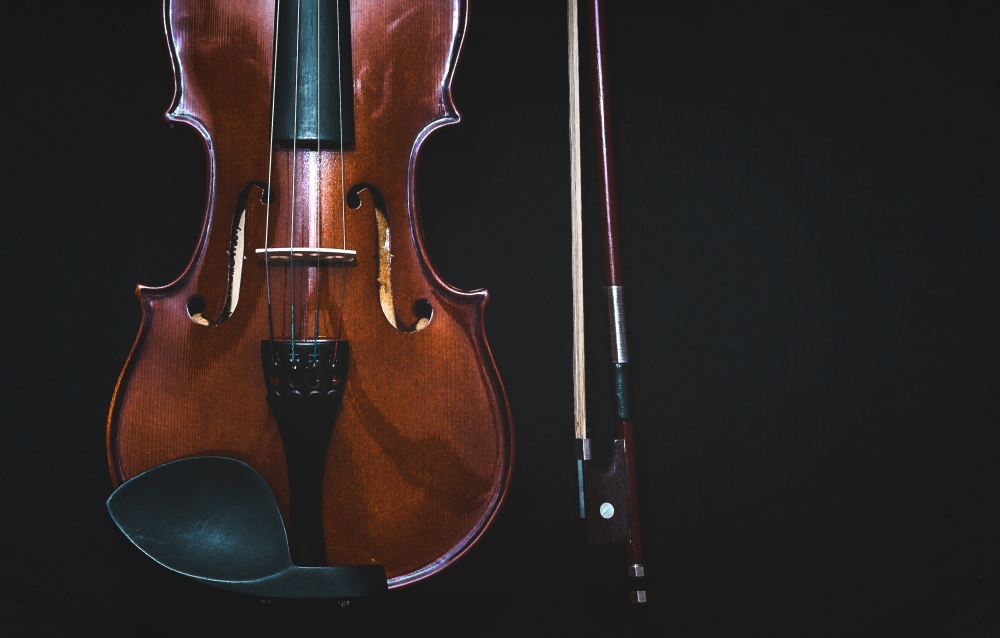
Mark 9:23-24 (NKJV)
23 Jesus said to him, “If you can believe, all things are possible to him who believes.”
24 Immediately the father of the child cried out and said with tears, “Lord, I believe; help my unbelief!”
I was trained as a classical guitarist (despite how out of practice I may be), and I recently began indulging in a growing enthusiasm for how jazz is listened to, learned, practiced, and performed — in particular, I have been more interested in how “playing in a jazz style” (in music and in other areas of life) is born in an individual.
The “Bass-ic” Structure
During the Medieval Era of music history (the time of Gregorian Chant, for instance), it was common for a group of singers to all sing homophonically (all singing the same tune in unison). Over time, composers began a very exciting project of experimentation: what would happen if you guys kept singing the melody while we sing the same patterns of notes starting at a different pitch!?…
This is, of course, more than likely something that has happened for countless ages, but (in the history of Western music, at least) this was the first time it was written down and formalized.
This practice evolved (under the watchful eye of the Catholic Church — music censor and critic of European culture) and eventually led to wild experiments of harmony and tonality (see, for example, ……)
The practice of beginning with a “germ” of an idea; repeating with variations; and even performing variations of the primary musical idea while the original was being performed was what eventually
18th Century “Jazz”
(Layperson’s Disclaimer: These thoughts are just from the perspective of a semi-professional musician and former high school orchestra director — I am in no way a scholar or musicologist…)
“Jazz” (arguably) emerged a LONG time ago…
With the emergence of written music, I imagine individuals were, for the first time, faced with a dilemma: “Do I play what’s on the page or what’s in my head?”
Roughly speaking, the way some music was created during the Baroque Era of music history (JS Bach’s time), for example, often included what was called a “figured bass“. Particularly true for the harpsichordist (the piano had not yet been invented) and cellist (or bassist) playing in an ensemble, it was extremely important for players to be expert improvisers.
These players were given a simplified form of the written music (containing just the bass line and some chord symbols), and they were expected to “fill in the blanks” while the rest of the ensemble played the pre-written melodies and harmonies of the piece.
This way of creating music is very interesting to explore in relation to the more modern invention of Jazz…
20th century (etc.) “Jazz“
What is considered “Jazz” varies depending on who you talk to… Regardless of the style of jazz being discussed, the structure of jazz performance does vary depending on the ensemble (just like Baroque music); but, in general, one common factor is the use of “lead sheets”: a sheet of music where the melody is (more or less) clearly written out, and the suggested chords are written above for the accompanying (“comping”) instrumentalists.
Say there is a group consisting of a bass player, pianist, drummer, trumpet player, and saxophonist: while most players (the drummer, bassist, and pianist, for example) play rhythmically-driven lines of accompaniment based on the chords of the tune, other melodic instruments (like the trumpet and sax) play the written-out melody called the “head” — not dissimilar to the classical “da capo”, meaning “the head”. Then, they take turns improvising over the progression of chords listed on the lead sheet.
These improvisations can sometimes be wild mixtures of variations of the melody and spontaneous musical material [an element of improvisation known as “3rd to flat-9” is enormously interesting because of how often that particular sound emerges in the music of folks like Bach — this is just my opinion].
All this concludes (after several cycles) in a return to the head (“da capo!”), and sometimes a nice little ditty to round out the ending (much like the classical “coda”, which means “tail”).
This is a very interesting process to me as a musician for several reasons…
- It shows a very natural sequence of music-making that seems to be (at least partially) inherent in the way humans experience music;
- It is SCARY: performing music has its own set of self-conscious challenges — but, expressing oneself through music spontaneously (while maintaining coherence with the underlying structure of the piece and in harmonious flow with the other souls in the band) is an especially intimidating task;
- And, (among other things) it seems to reflect more about being alive than mere music-making…